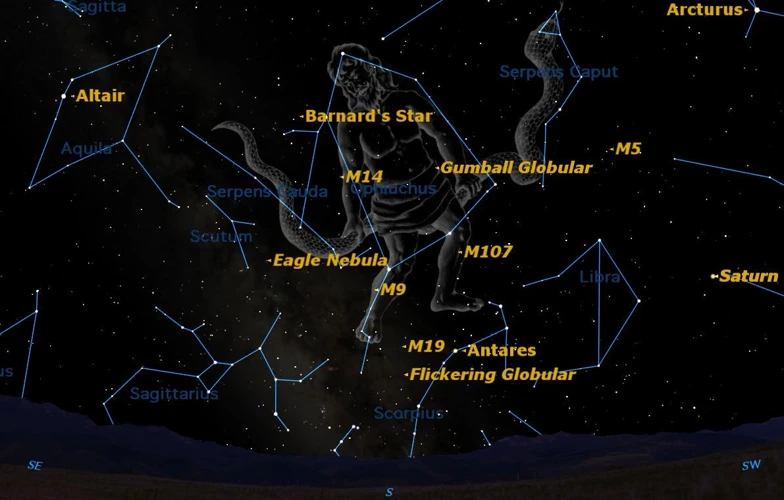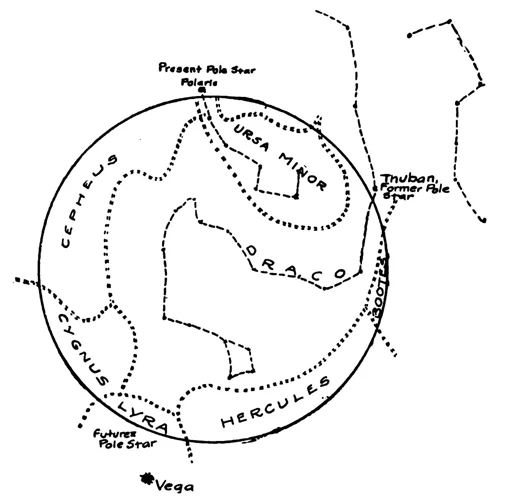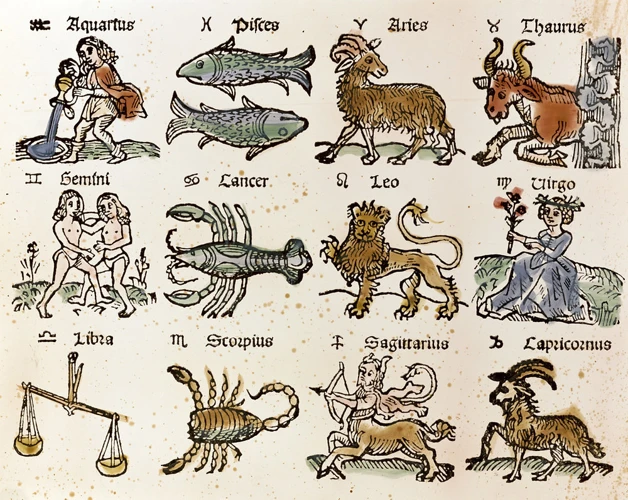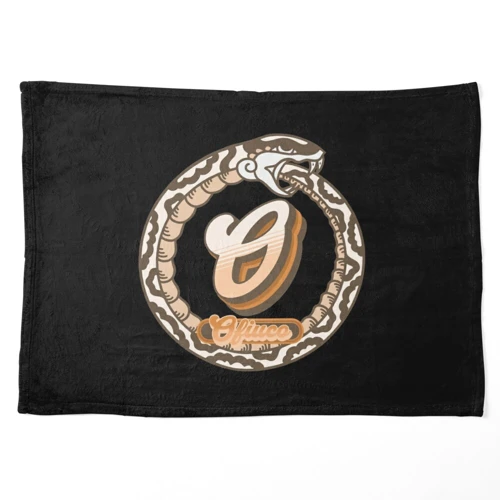Located in the northern celestial hemisphere, the constellation Leo has captivated humans for centuries with its majestic presence in the night sky. With its bright stars forming a distinctive shape resembling a lion, Leo has inspired countless myths, legends, and artistic representations throughout history. In this article, we will delve into the fascinating origin of the Leo constellation, explore the captivating story of the Nemean Lion, examine its significance in mythology and astrology, and delve into its representation in art and symbolism. Join us as we unravel the mysteries and explore the awe-inspiring tale behind the wrath of the lion.
Contents
- Origin of the Leo Constellation
- The Story of the Nemean Lion
- Leo in Mythology and Astrology
- Leo in Art and Symbolism
- Conclusion
-
Frequently Asked Questions
- 1. Why is Leo called the “Lion” constellation?
- 2. What is the mythological origin of the Leo constellation?
- 3. How can I locate the Leo constellation in the night sky?
- 4. What are the astrological traits associated with people born under the sign of Leo?
- 5. How does Leo relate to the zodiac?
- 6. What other cultures have interpretations of the Leo constellation?
- 7. Are there any notable stars or objects within the Leo constellation?
- 8. How has the Leo constellation been portrayed in ancient art?
- 9. What is the symbolic significance of the Leo constellation?
- 10. Can the alignment of the planets impact Leo’s astrological forecast?
- References
-
Frequently Asked Questions
- What is the Leo constellation?
- What is the story behind the Leo constellation?
- What is the origin of the Leo constellation?
- Who was the Nemean Lion?
- What was Heracles’ first labor?
- How did Heracles defeat the Nemean Lion?
- How does Leo relate to the zodiac?
- What are the astrological influences of Leo?
- What is the symbolic significance of the Leo constellation?
- How is the Leo constellation portrayed in ancient art?
- References
- Read More
Origin of the Leo Constellation

The Leo constellation has a rich and fascinating origin that dates back to ancient times. In Ancient Greek mythology, the legend of Leo is intricately linked to the myth of the Nemean Lion, a fearsome creature with impenetrable golden fur and supernatural strength. The story goes that the lion was slayed by the mighty hero Heracles as one of his twelve labors. This epic tale has been passed down through generations, and the image of the lion immortalized in the stars. It is important to note that Leo is not exclusive to Greek mythology, as other cultures have their own interpretations of the constellation. For example, in Egyptian mythology, the lion is associated with the powerful god Osiris, who represents life, death, and resurrection. While there are various cultural interpretations, the constellation Leo remains a symbol of strength, nobility, and courage across different mythologies and astrological beliefs. To understand the significance of Leo in astrology, we need to explore its connection to the zodiac and its unique astrological influences. If you are interested to know more about the significance of Osiris in mythology, you can read our article “The Significance of Osiris: Exploring the Mythological God of Egypt”.
Ancient Greek Myth
The Ancient Greek myth surrounding the Leo constellation is deeply rooted in the story of the Nemean Lion. According to the legend, the Nemean Lion was a fearsome beast with impenetrable golden fur, making it invincible to mortal weapons. This ferocious creature ravaged the land, terrorizing humans and animals alike. It was believed to have been born from the union of the monster Typhon and the half-serpent, half-human figure, Echidna.
This powerful lion was eventually confronted by the heroic figure of Heracles as his first labor set by King Eurystheus. Heracles, known for his exceptional strength and courage, sought to prove himself by slaying the lion and bringing back its golden fur. Armed with his trusty bow and arrows, as well as his impenetrable lion skin as protection, Heracles embarked on his quest.
The confrontation between Heracles and the Nemean Lion was a fierce battle of strength and wit. Despite the lion’s invincibility, Heracles discovered a vulnerable point on its body – its mouth. Using his incredible strength, Heracles strangled the lion, choking the life out of it. With the lion’s demise, he triumphantly skinned it, creating the legendary Nemean lion skin, which became his iconic symbol of power and valor.
This myth demonstrates the immense strength and heroism of Heracles, as well as the indomitable power of the Nemean Lion. Through their struggle, the constellation Leo came to represent bravery, determination, and triumph over adversity. It serves as a reminder of the courage and resilience that lies within each person, echoing the ancient Greek belief in the potential for heroism in all individuals.
To delve deeper into the world of astrology, you can explore the compatibility of Ophiuchus in the zodiac signs. Learn more in our article “Ophiuchus Compatibility with the Zodiac Signs: Unveiling the Serpent Bearer’s Influence”.
Other Cultural Interpretations
Throughout history, the Leo constellation has been interpreted and revered by various cultures around the world. In Chinese mythology, the constellation is known as “Bixi,” a celestial turtle that symbolizes longevity, wisdom, and protection. In Hindu mythology, Leo is associated with the deity Narasimha, a half-man, half-lion incarnation of Lord Vishnu. Narasimha represents the triumph of good over evil and is revered for his courage and strength. In Native American culture, the Lakota people see the stars of Leo as the backbone of a powerful celestial lion. This constellation is connected to the concept of leadership and symbolizes characteristics such as bravery, honor, and loyalty. It is fascinating to witness how the Leo constellation transcends borders and cultural boundaries, yet consistently embodies similar attributes of power, authority, and regality across different civilizations. Exploring these diverse cultural interpretations not only broadens our understanding of the mythological significance of Leo but also highlights the universal human fascination with the majestic lion in the cosmos. If you are interested in the role of planetary alignments in forecasting technological advancements, you can read our article “The Role of Planetary Alignments in Forecasting Technological Advancements”.
The Story of the Nemean Lion

The story of the Nemean Lion is an ancient Greek myth that portrays the immense strength and bravery of the hero Heracles, also known as Hercules. According to legend, the Nemean Lion was a fearsome beast, impossible to harm with mortal weapons due to its impervious golden fur. The lion terrorized the region of Nemea, devouring livestock and instilling fear in the hearts of the people. As the first of his twelve labors, Heracles was tasked with slaying the formidable lion. Armed with his wits and courage, Heracles embarked on his quest. He tracked down the lion and engaged in a fierce battle, where he realized that his conventional weapons were ineffective against the beast. Thinking on his feet, Heracles used his extraordinary strength to strangle the lion with his bare hands, ultimately defeating the fearsome creature. The story of Heracles’ triumph over the Nemean Lion showcases his extraordinary bravery and sets the stage for his subsequent heroic adventures.
Birth of a Fearsome Beast
The birth of the Nemean Lion was no ordinary event. According to Greek mythology, the fearsome beast was said to be the offspring of Typhon, a monstrous serpent-like creature, and Echidna, a half-woman, half-snake creature known as the Mother of All Monsters. The union of these terrifying beings resulted in the creation of the Nemean Lion, a creature destined to bring terror and destruction. From the moment it was born, the lion possessed extraordinary powers. Its golden fur was said to be impenetrable, rendering it invincible against any weapon. This formidable attribute would prove to be a great challenge for anyone who dared to face the creature. As the Nemean Lion grew, so did its appetite for destruction, wreaking havoc wherever it roamed. Its mere presence struck fear into the hearts of both humans and gods alike. As word of the lion’s ruthless nature spread, it became abundantly clear that this celestial beast needed to be dealt with.
Heracles’ First Labor
One of the most famous and enduring legends associated with the constellation Leo is the first labor of the hero Heracles. In order to atone for the murders of his wife and children, Heracles was tasked by King Eurystheus to complete twelve impossible labors. The first of these challenges was to kill the fearsome Nemean Lion. The Nemean Lion was no ordinary predator; it was an immortal beast with impenetrable golden fur and immense strength. Heracles embarked on his mission, armed with his wits and a lion’s-skin cloak as protection. He tracked down the lion to its lair in the Nemean Mountains, a treacherous cave with multiple entrances. The hero devised a clever plan, blocking some of the entrances to prevent the lion from escaping. As Heracles encountered the lion face to face, he quickly realized that his arrows and sword were useless against the impenetrable hide of the creature. Bravely, he grappled with the lion, eventually overpowering and strangling it with his bare hands. With his extraordinary strength and determination, Heracles accomplished the seemingly impossible task and emerged victorious. This epic feat not only marked the beginning of Heracles’ legendary Twelve Labors but also solidified the story of the Nemean Lion as a symbol of courage, heroism, and triumph.
Confrontation and Victory
During the confrontation between Heracles and the Nemean Lion, the battle reached its climax with a fierce struggle. The lion’s impenetrable golden fur provided it with near invulnerability, making it a formidable opponent. As the mighty hero Heracles grappled with the lion, he realized that conventional weapons could not pierce its hide. In a desperate bid to defeat the creature, Heracles resorted to using his bare hands, utilizing every ounce of his strength and unleashing his legendary prowess. With sheer determination and unwavering courage, Heracles used his incredible physical power to strangle the lion and eventually emerged victorious. This momentous triumph solidified Heracles’ reputation as a legendary hero, showcasing his unmatched strength and resilience. The ferocious battle between Heracles and the Nemean Lion forever immortalized the constellation Leo, serving as a reminder of the indomitable spirit and unwavering bravery that lie within us all.
Leo in Mythology and Astrology

Leo holds a prominent place in both mythology and astrology, with its symbolism deeply ingrained in human culture. In astrology, Leo is one of the twelve zodiac signs and is associated with individuals born between July 23rd and August 22nd. Represented by the Lion, those born under the Leo sign are known for their strong-willed nature, leadership qualities, and a desire for recognition. Astrologically, Leo is ruled by the Sun, a celestial body of immense power and vitality. This connection to the Sun further emphasizes Leo’s association with warmth, creativity, and self-expression. In mythology, Leo is often associated with Heracles, also known as Hercules, and the Nemean Lion. According to Greek mythology, the Nemean Lion was an intimidating and indestructible beast that terrorized the land until it was ultimately slain by Heracles. This myth symbolizes the heroic and courageous nature often attributed to the Leo sign. The legends and stories surrounding Leo in mythology and astrology showcase the enduring fascination and admiration humans have had for this majestic constellation throughout history.
Leo and the Zodiac
Leo, as part of the zodiac, holds a special significance in astrology. Represented by the symbol of a lion, Leo is the fifth astrological sign and is associated with those born between July 23 and August 22. People born under the sign of Leo are known for their charismatic and confident nature. They possess a natural leadership ability and are often seen as the life of the party. Leo is a fire sign, which means individuals born under this sign are passionate, creative, and enthusiastic. They have a strong desire for recognition and are driven by a need for self-expression. Leo is also ruled by the Sun, which is considered the center of the solar system and represents vitality and strength. This connection to the Sun further enhances Leo’s characteristics of warmth, generosity, and a radiant personality. Some famous Leos include Madonna, Barack Obama, and Jennifer Lopez. In terms of compatibility, Leos are believed to get along well with other fire signs such as Aries and Sagittarius, as they share similar energy and enthusiasm. However, they may experience challenges in relationships with more practical and reserved signs such as Taurus or Capricorn. It’s important to note that astrology is a complex subject, and individual characteristics can vary based on a person’s birth chart, which takes into account other factors such as the position of the planets at the time of birth. For more information on zodiac compatibility, you can read our article “Ophiuchus Compatibility: Exploring the Lesser-Known Zodiac Sign”.
Astrological Influences
Astrological influences play a significant role in shaping the personality traits and characteristics associated with individuals born under the Leo zodiac sign. Ruled by the Sun, those born under the sign of Leo are known for their vibrant energy, passion, and natural leadership abilities. They possess a magnetic charisma that draws others towards them, and they thrive in the spotlight. Leos have a strong desire to express themselves creatively and artistically, often excelling in fields such as acting, writing, and performing arts. They have an innate sense of loyalty and protectiveness towards their loved ones, and they are generous and warm-hearted individuals. However, their strong personality and need for attention can sometimes lead to a tendency for self-centeredness or an inclination towards seeking constant admiration. The influence of the Sun also brings an abundance of confidence, courage, and a zest for life to Leos, allowing them to overcome challenges and shine brightly in any situation. It is important to note that each individual’s birth chart and the placement of other planets at the time of birth can further shape and modify these astrological influences. If you are curious about the compatibility of Leo with other zodiac signs, you can explore our article “Ophiuchus Compatibility: Exploring Zodiac Sign Compatibility” to discover how Leo interacts with other signs in the zodiac.
Leo in Art and Symbolism

The image of the lion in the Leo constellation has not only captured the imagination of mythological tales and astrology but has also found its way into art and symbolism throughout history. In ancient times, representations of the lion were prevalent in various forms of art, including pottery, sculptures, and mosaics. The lion symbolized strength, bravery, and kingship, and its depiction conveyed power and authority. Symbolically, the lion represents courage, leadership, and protection. It is often associated with qualities such as bravery, loyalty, and confidence. In heraldry, the lion is a common motif, signifying noble lineage and fierce protectiveness. The lion’s significance in art and symbolism continues to resonate in modern times, serving as a reminder of the enduring qualities that the lion represents.
Representation in Ancient Art
In ancient art, the representation of the Leo constellation played a significant role in various cultures and civilizations. Many civilizations, including the Egyptians, Greeks, and Romans, incorporated the image of the lion into their artwork as a symbol of power, royalty, and divinity. Egyptian art often depicted lion-headed deities, such as the goddess Sekhmet, who was associated with war and protection. The Greeks and Romans, influenced by Egyptian art, also depicted the lion in various forms. In Greek art, the Nemean Lion was portrayed with its distinctive mane, capturing its fearsome and majestic nature. Roman art, on the other hand, often depicted the constellation as a lion devouring its prey, symbolizing the fierce and dominant nature of this celestial being. These depictions were not limited to sculptures and paintings alone but also appeared in mosaics, coins, and other forms of artistic expression. The ancient art representations of Leo served to honor the constellation’s connection to strength, courage, and rulership, perpetuating its mythical significance through visual storytelling and symbolism. To delve deeper into the topic of zodiac signs and compatibility, you can refer to our article “Unveiling the Secrets: Ophiuchus Compatibility with the Zodiac Signs”.
Symbolic Significance
The Leo constellation carries profound symbolic significance in various cultures and artistic representations. Here are some key aspects of its symbolism:
1. Royalty and Leadership: Leo is often associated with qualities of royalty, leadership, and authority. The lion, as the king of the animal kingdom, embodies power, confidence, and regal demeanor. In many ancient civilizations, the lion was seen as a symbol of rulership and divine authority.
2. Courage and Strength: The lion’s strength and bravery are symbolic of qualities such as courage, determination, and resilience. It represents the ability to overcome obstacles and face challenges head-on. In mythology and storytelling, the lion often serves as a representation of valor and heroism.
3. Passion and Creativity: Leo is associated with the element of fire in astrology, symbolizing passion, creativity, and enthusiasm. Individuals born under this sign are believed to possess a fiery and energetic nature, often displaying a zest for life and a drive to pursue their passions and creative endeavors.
4. Generosity and Warmth: Like the Sun, which rules the Leo zodiac sign, individuals influenced by Leo are often known for their warmth, generosity, and ability to shine a light on others. They have a natural inclination to uplift and inspire those around them through their charisma and positivity.
5. Self-Expression and Individuality: Leo is associated with self-expression and individuality. People born under this sign are thought to embrace their uniqueness and have a strong sense of self. They are often confident in asserting their true identities and are known for their bold and charismatic personalities.
The symbolic significance of Leo encompasses themes of leadership, courage, passion, generosity, and individuality. Its representation in art, astrology, and mythology showcases the enduring fascination humans have with this majestic celestial symbol. Understanding these symbolic meanings allows us to appreciate the cultural and historical significance of the Leo constellation.
Conclusion

In conclusion, the legend behind the constellation Leo is a captivating tale that has left an indelible mark on human culture throughout history. The origin of the Leo constellation in Greek mythology, specifically the story of the Nemean Lion, showcases the bravery and strength of the hero Heracles as he embarks on his first labor. This fearsome beast, with its invincible hide, served as a formidable opponent for Heracles, highlighting his remarkable skills and determination.
The significance of Leo extends beyond Greek mythology, with other cultures also associating the lion constellation with their own beliefs and interpretations. In Egyptian mythology, for instance, the lion is connected to the powerful god Osiris, representing the cycle of life, death, and rebirth. This further emphasizes the enduring symbolism and cultural significance of Leo across different civilizations.
In astrology, Leo holds a prominent place as the fifth zodiac sign. Individuals born under this sign are often characterized as confident, ambitious, and passionate. They possess natural leadership qualities and are known for their desire to shine and be the center of attention. The astrological influences of Leo bring qualities of warmth, generosity, and creative expression to those born under its celestial presence.
Additionally, Leo has inspired countless artistic representations, both ancient and modern, as well as being used as a symbol in various contexts. Ancient artworks depict the strength and regal nature of the lion, while Leo’s symbolism has been adopted to represent royalty, power, and courage. The lion, as a creature of grace and ferocity, continues to be a timeless symbol in our human consciousness.
In conclusion, the wrath of the lion as depicted in the Leo constellation transcends time and culture. Its captivating origin, the tale of the Nemean Lion, leaves us in awe of the heroism displayed by Heracles. From mythology to astrology and art, the symbolism of Leo continues to fascinate and inspire us. As we gaze upon the celestial lion in the night sky, we are reminded of the noble qualities associated with Leo and the enduring legacy of its mythical origins.
Frequently Asked Questions

1. Why is Leo called the “Lion” constellation?
Leo is called the “Lion” constellation because its pattern of stars in the sky resembles the shape of a lion. The name “Leo” is derived from the Latin word for lion.
2. What is the mythological origin of the Leo constellation?
The Leo constellation has its origins in Greek mythology. According to the myth, it represents the Nemean Lion, which was an incredibly powerful beast killed by the hero Heracles as one of his twelve labors.
3. How can I locate the Leo constellation in the night sky?
The Leo constellation is easily recognizable and can be found by looking towards the east during the spring and early summer months in the northern hemisphere. Look for the bright star called Regulus, which marks the heart of the lion.
4. What are the astrological traits associated with people born under the sign of Leo?
People born under the sign of Leo are often characterized as confident, passionate, and natural leaders. They are known for their warm-hearted and generous nature, as well as their desire to be in the spotlight.
5. How does Leo relate to the zodiac?
Leo is one of the twelve zodiac signs and is associated with the period between July 23rd and August 22nd. It is the fifth sign of the zodiac and is represented by the symbol of the lion.
6. What other cultures have interpretations of the Leo constellation?
Aside from Greek mythology, other cultures have their own interpretations of the Leo constellation. In Egyptian mythology, the lion is associated with the god Osiris, symbolizing power and royalty.
7. Are there any notable stars or objects within the Leo constellation?
Yes, besides Regulus, the brightest star in Leo, there are other interesting objects in the constellation. For example, there is Messier 65 and Messier 66, two spiral galaxies that are part of the famous Leo Trio.
8. How has the Leo constellation been portrayed in ancient art?
In ancient art, the Leo constellation has often been depicted as a lion or a lion-headed figure. It has been featured in various forms of artwork, such as sculptures, pottery, and mosaics, symbolizing strength and royalty.
9. What is the symbolic significance of the Leo constellation?
The Leo constellation is seen as a symbol of courage, strength, and leadership. It represents the untamed power of the lion, a majestic and regal creature that commands respect.
10. Can the alignment of the planets impact Leo’s astrological forecast?
Astrologers believe that the alignment of the planets can influence Leo’s astrological forecast. The positions of the planets at the time of one’s birth are thought to shape their personality traits and life path.
References
- Leo: The Victorious Lion of Judah | Bethany Blankley
- The Fifth Sign of the Zodiac – The Story of Leo
- Leo
Frequently Asked Questions

What is the Leo constellation?
The Leo constellation is one of the 88 official constellations recognized by astronomers. It is located in the northern hemisphere and is known for its distinctive shape resembling a lion.
What is the story behind the Leo constellation?
The Leo constellation is said to be named after the Nemean Lion, a fearsome beast in Greek mythology. The constellation represents the lion slain by the hero Heracles as one of his twelve labors.
What is the origin of the Leo constellation?
The origin of the Leo constellation can be traced back to ancient civilizations like the Greeks, Egyptians, and Babylonians, who observed the patterns of stars and incorporated them into their myths and cultures.
Who was the Nemean Lion?
The Nemean Lion was a monstrous creature with impenetrable golden fur, invulnerable to weapons. It was believed to be the offspring of Typhon and Echidna, two fearsome mythical beings, and terrorized the land of Nemea.
What was Heracles’ first labor?
Heracles’ first labor was to kill the Nemean Lion. This task was given to him by King Eurystheus as a punishment for killing his wife and children in a fit of madness caused by the goddess Hera.
How did Heracles defeat the Nemean Lion?
Heracles first attempted to use his weapons against the lion, but to no avail. Eventually, he realized that he needed to rely on his strength and cunning. He strangled the lion with his bare hands, using his immense power to overcome the beast.
How does Leo relate to the zodiac?
Leo is one of the twelve zodiac signs, representing individuals born between July 23 and August 22. Those born under the sign of Leo are said to possess characteristics such as leadership, bravery, and a confident personality.
What are the astrological influences of Leo?
According to astrology, individuals born under the sign of Leo are believed to be creative, enthusiastic, and natural-born leaders. They are often associated with the element of fire, symbolizing their passion and energy.
What is the symbolic significance of the Leo constellation?
The Leo constellation is seen as a symbol of power, strength, and courage. It represents the ability to overcome challenges and achieve greatness. It serves as a reminder to embrace one’s inner lion-like qualities and assertiveness.
How is the Leo constellation portrayed in ancient art?
In ancient art, the Leo constellation is often depicted as a majestic lion, sometimes accompanied by other celestial figures or symbols. These artistic representations highlight the significance and reverence given to the constellation in different cultures.
References
- Leo Constellation – Features & Facts – The Planets
- Leo
- Leo constellation: Facts, location, and stars of the lion







